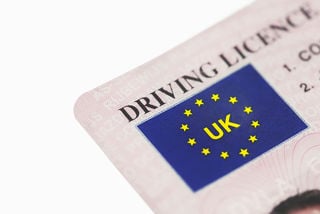The Association for Driving Licence Verification is seeking to incorporate feedback from business owners, fleet managers and HR officers in developing a best practice guide to checking driver licence entitlement.
The online guide, which will highlight the correct verification systems to use in specific circumstances, is being drawn up in response to the imminent withdrawal of the paper driving licence counterpart by the DVLA.
Once published in Q3 2015, it aims to serve as a compliance document for both the private and public sector fleet industries.
Among the topics the guide will cover are:
The legal aspects of driver entitlement: This will cover the current classes and categories of licence and the verification levels required to meet them.
Endorsement codes: An overview of existing codes.
Holders of overseas licences: This section will highlight guidance on defining residency both within and outside the European Union and the appropriate requirements for driver entitlement accordingly.
Licence checking options and procedures: The guide will highlight the different systems available for checking driver entitlement and which of these Fleet and HR managers see as providing the most appropriate level of compliance for their own circumstances. This includes the difference between the DVLA and the commercial services available. For example, most fleet managers with fleets of more than 20 drivers are already moving to commercial electronic checking. It will also highlight the correct procedures for each option – for example the VDL (View My Licence) facility is purely for use by the licence holder themselves and not by third parties.
Areas of caution: The final section of the guide will seek to ensure that readers are aware of the limitations of some methods of checking and their liabilities under current Data Protection legislation. An example of each would be he .pdf screen shot that can be produced with the DVLA’s single-view SMDR (ShareMyDriving Record) service has no legal standing and is not a sufficient proof of driver entitlement on its own as it can be edited, while the DVLA’s current VDL facility is purely meant for use by the individual licence holder or could be used by a business but only with the driver’s explicit consent. Some organisations have wrongly assumed this consent has been given automatically; it is a criminal offence to obtain someone else’s information without their permission.
Richard Payne-Gill, deputy chair of ADLV, said: “The need for this guide is clearly pressing, given the ongoing confusion about the various licence checking options available following the withdrawal of the paper counterpart to the licence.
“We are preparing the guide, as organisations need to know the best practice way to proceed and what constitutes compliance within their own organisation.
"However, rather than simply dictate the key issues and remedies therein, we aim to include feedback from business owners, HR officers and fleet managers to ensure that we are both relevant and meeting the real needs of the market once the licence counterpart has gone.
“In the future we are also considering a video on the “caution” element of the guide to show just how easy it is to abuse and misuse paper .pdfs and the serious consequences of getting it wrong.
“So the ADLV would love to hear from relevant parties across all sectors, including both car and freight based fleets, about the issues raised and we look forward to incorporating as many of their ideas as possible.”
Anyone wishing to contribute to the guide should email richard.paynegill@adlv.co.uk.

















Login to comment
Comments
No comments have been made yet.